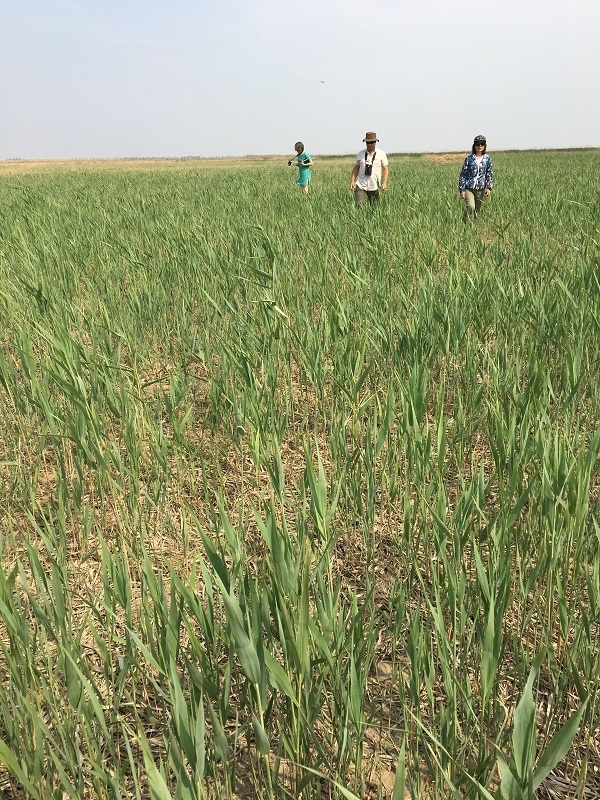Locusts are one of the main pests that damage crops and pasture areas, especially in their adult stage when they are able to fly and form swarms. Except for Antarctica, they are present on all continents. For a long time, the main way to eliminate them has been chemical pesticides. However, these pesticides harm the environment and affect biodiversity. Thus, in recent years there has been a promotion of biopesticides, mainly entomopathogenic fungi, that is, fungi that infect and kill insects. To ensure the effectiveness of the fungus, which work better on insects with lower body temperatures, it is key to control when they are applied. According to a study published in the journal Frontiers in Physiology by an international team that included Pablo González, a researcher at the Department of Forest Engineering at UCO who has studied the eastern migratory locust, the best time to apply the fungus is when they are young, specifically around 20 days after hatching.
At that moment, when the locust is in the third phase of development (of the five it passes until its adult stage), is when the optimal temperature and behaviour conditions occurs to guarantee the effectiveness of the biopesticide. Since locusts, being ectothermic insects, cannot regulate their internal temperature by themselves, what they do is to modify their behaviour to find more suitable temperature zones.
After analysing almost 1,000 samples of eastern migratory locust collected in the Chinese provinces of Dagang and Dongying, the research found that in the third phase of development the lobsters maintain a lower temperature than in other stages (below 35 degrees) as they are normally located close to the ground due to their vulnerability. As the locusts grew, their temperature increased because they approached warmer areas, above the vegetation or even flying. Because it has lower temperatures, the third phase represents the ideal time to apply the fungus.
But, in addition, since it is applied in the third phase of growth, the fungus has enough time to act before the locust reaches its adult stage (which occurs 35-40 days after the hatching of the eggs and is extends 20 or 30 more days) when it can already fly and become a problem for crops.
Authorities in areas traditionally affected by locust infestations continuously monitor their populations to identify their status and abundance. Therefore, identifying the optimal time to apply the biopesticide may help them to better control the plague.
The study, which has been carried out in China, but can be extrapolated to other areas, has received funding from the United Kingdom and China and has been led by researchers belonging to the international NGO CABI whose objective is to improve people's lives by providing information to solve problems in agriculture and the environment, in addition to researchers from Zhejiang University and the national agricultural extension service of China and the University of Córdoba in Spain.
Reference
Li H, Zhu J, Cheng Y, Zhuo F, Liu Y, Huang J, Taylor B, Luke B, Wang M and González-Moreno P (2023) Daily activity patterns and body temperature of the Oriental migratory locust, Locusta migratoria manilensis (Meyen), in natural habitat. Frontiers in Physiology. 14:1110998. doi: https://doi.org/10.3389/fphys.2023.1110998.


